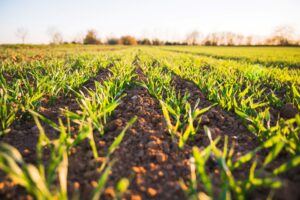Recyclers acquired more than five billion pounds of post-consumer plastic recovered for recycling in the U.S. in 2021, an increase of 280.3 million pounds compared to 2020 volumes, according to a new report released by the Association of Plastic Recyclers (APR), The Institute of Scrap Recycling Industries (ISRI), and the U.S. Plastics Pact. Partial funding for the report was also provided by The Recycling Partnership. Prepared by Stina Inc and based on surveys conducted by Stina and the National Association for PET Container Resources (NAPCOR), the 2021 U.S. Post-consumer Plastic Recycling Data Report details U.S.-sourced post-consumer plastic recovered for recycling.
The increase in 2021 volumes recovered for recycling in the U.S. show that all major categories of plastic recovered for recycling had a net increase in total pounds reported in 2021 compared to 2020, specifically bottles, non-bottle rigids, and film categories. Within those broader categories, there was a slight decline in the recovery of high-density polyethylene (HDPE) bottles and polypropylene (PP).
The 2021 report also indicates that the vast majority of plastics recovered are being recycled in North America, primarily by U.S. reclaimers. North American plastic reclaimers acquired a total of 4,693 million pounds, or 92.3%, with 391 million pounds, or 7.7% of plastic recovered for recycling bound for overseas export markets.
“The 2021 rate report shows the strength of the recycling industry, as they face ongoing challenges including competition with low disposal costs, collection rates, and virgin resin prices,” said Steve Alexander, president and CEO of APR. “APR works with companies to increase yields and supply by ensuring plastic packaging is designed for recyclability through the APR Design Guide and other programs, but in order to see bigger increases, there’s a need for systematic change led by public policy to drive collection, improve sortation and stabilize demand for recycled resins. APR is supportive of Extended Producer Responsibility (EPR) laws and recycled postconsumer content requirements recently enacted in several states. APR also supports a national bottle bill and other federal legislation that can drive change through a combination of supply and demand policies, targeted funding and incentives, as well as streamlined collection programs.”
The 2021 Report shows that the five billion pounds of materials recovered in 2021 include bottles (2,886.7 million pounds and 56.8% of total); non-bottle rigids (1,071 million pounds and 21.1% of total), film (1,106.2 million pounds and 21.8% of total) and “other plastics” (20.2 million and 0.4% of total).
“The recycled materials industry is doing more than ever to ensure that at the end of a product’s life, less material goes to waste,” said Robin Wiener, president of ISRI. “Our goal is to make the supply chain ever more sustainable by providing manufacturers with high-quality material and reducing the need to extract natural resources to make new products we rely on every day.”
The net bottle increase of 142.5 million pounds in 2021 was primarily due to the increase in PET bottle volumes recovered for recycling. This was offset by declines in the valuable natural HDPE commodity market (e.g., recycled milk jugs). Non-bottle rigids were up slightly from 2021, primarily due to increases in HDPE and PET non-bottle materials recovered for recycling, for a net 13.6-million-pound increase. Also contributing to the 2021 increase was an additional 120.5 million pounds in film recovery from 2020 volumes, primarily in polyethylene (PE) mixed color film.
“The U.S. Plastics Pact is working to raise the quality and quantity of post-consumer recycled plastics, particularly for PET and HDPE packaging, which make up the largest tonnages of packaging represented by our members,” said Emily Tipaldo, executive director of U.S. Plastics Pact. “If we expect to achieve true recyclability, we need high demand for recycled plastics. Achieving true recyclability, as well as using higher percentages of PCR requires significantly greater tonnages of recycled plastics. The U.S. Pact is glad to see increases in the amount of plastic recovered for recycling and that the majority of the plastic is being recycled in North America.”
Click here for access to the data dashboard and the full data report.





